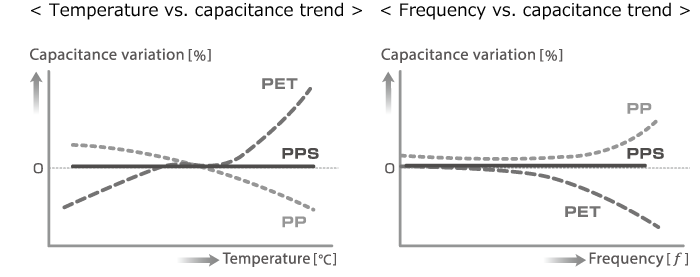Electronics ABC
Capacitors, Part 4 "Film Capacitors [1]"

Film capacitor types
As their name suggests, film capacitors employ a plastic film as dielectric. The technical ancestor of this type of capacitor is the paper capacitor invented in the second half of the 19th century. It consisted of paper impregnated with oil or paraffin, sandwiched between sheets of aluminum foil and rolled into a round shape. A capacitor where the metal foil is replaced by a layer of metal directly created on the paper by means of vapor deposition is called an MP (metallized paper) capacitor. Based on this technique, film capacitors were developed in the 1930s. Compared to multilayer ceramic chip capacitors, it is difficult to make film capacitors small, but they offer high insulation resistance and high reliability. Film capacitors are found for example in electric home appliances, electronic circuits in cars, industrial equipment, and power electronics devices.
Depending on how the internal electrode is formed, film capacitors are divided into two main categories, namely foil electrode types and vapor deposition electrode (metallized film) types. Subcategories according to construction include wound types, laminated types, inductive and non-inductive types, etc.
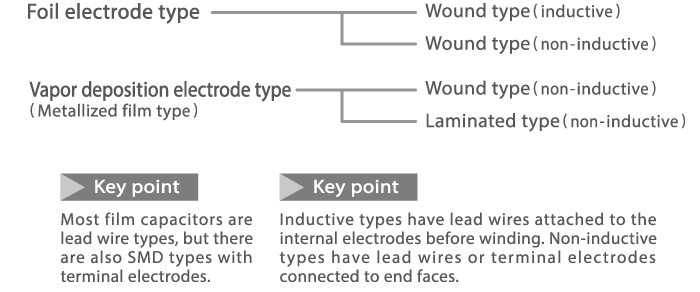
Major dielectrics used for film capacitors and their characteristics
The plastic films listed below are used as dielectrics of film capacitors. Capacitors using PET as dielectric are also called mylar capacitors, after the brand name of a PET film made by DuPont. So-called styrol capacitors are film capacitors using polystyrene (styrol resin) as a dielectric. This type has been largely replaced by PP types and is no longer manufactured in significant quantities today.
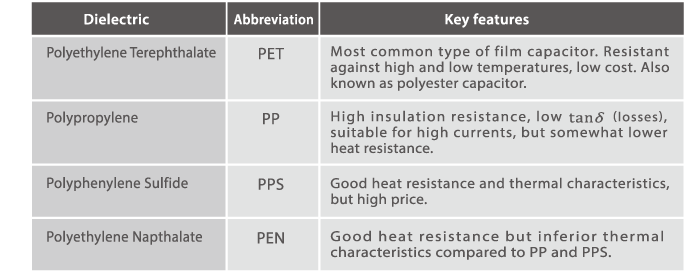
Performance comparison of film capacitors by dielectric
The performance of film capacitors differs, depending on the type of dielectric. It is therefore necessary to select the proper type according to the usage conditions.
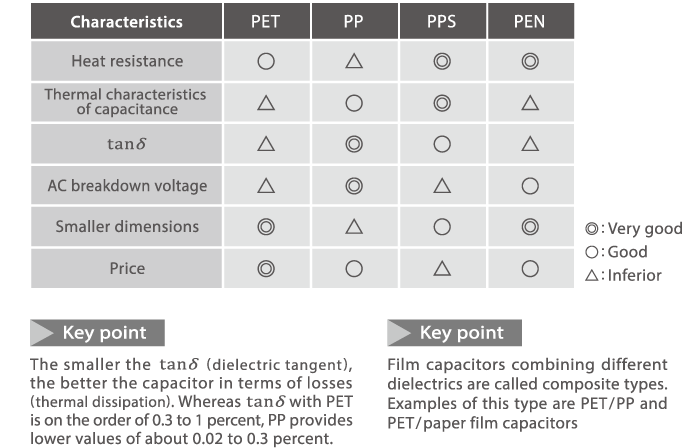
Construction of film capacitors
●Foil electrode type film capacitors
Wound type film capacitors with internal electrodes are made of metal foil (aluminum, tin, copper, etc.) sandwiched between plastic film layers and rolled up. They come in inductive and non-inductive versions. Inductive types have lead wires attached to the internal electrodes before winding, while non-inductive types have lead wires or terminal electrodes connected to end faces. Compared to inductive types, non-inductive film capacitors have a lower inductance component and exhibit better high frequency characteristics.
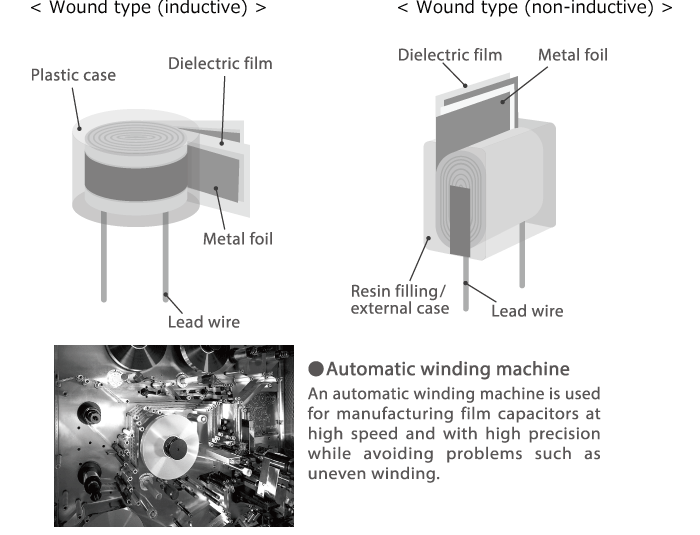
●Vapor deposition electrode type (metallized film type)
Instead of using foil as electrode, this type of film capacitor uses a layer of metal (aluminum, zinc, etc.) deposited on the plastic film itself to form an internal electrode. Because the deposited film is very thin, the capacitor can be made smaller than the foil electrode type.
Vapor deposition type capacitors are of the non-inductive type where the electrode is connected to an end face. In terms of manufacturing method there are wound types and laminated types.
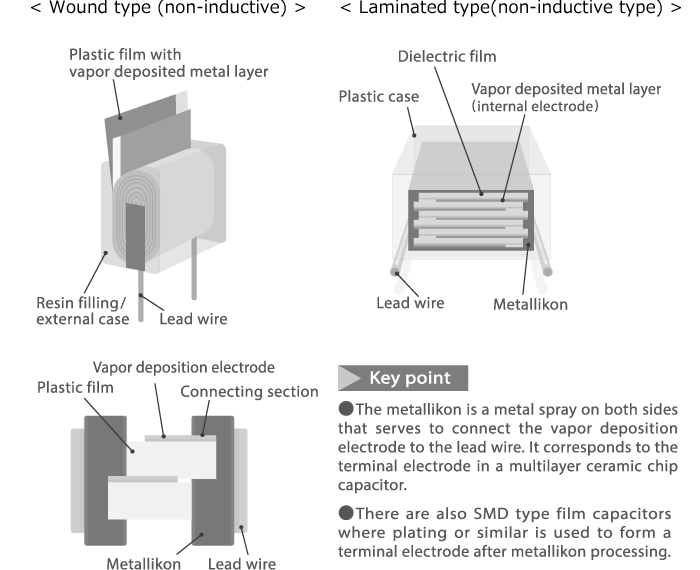
Manufacturing process of film capacitors
TDK is a comprehensive electronic components manufacturer leading the world in magnetic technology



